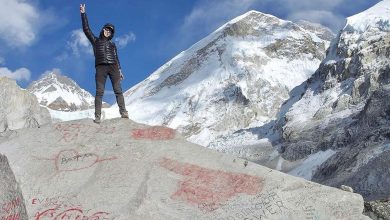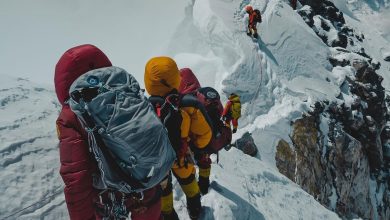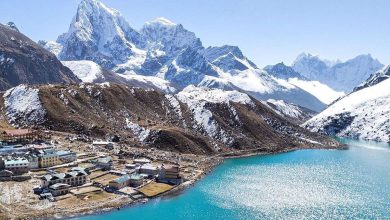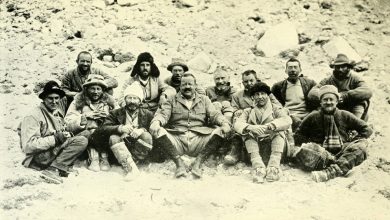How To Train to Climb Mount Everest?
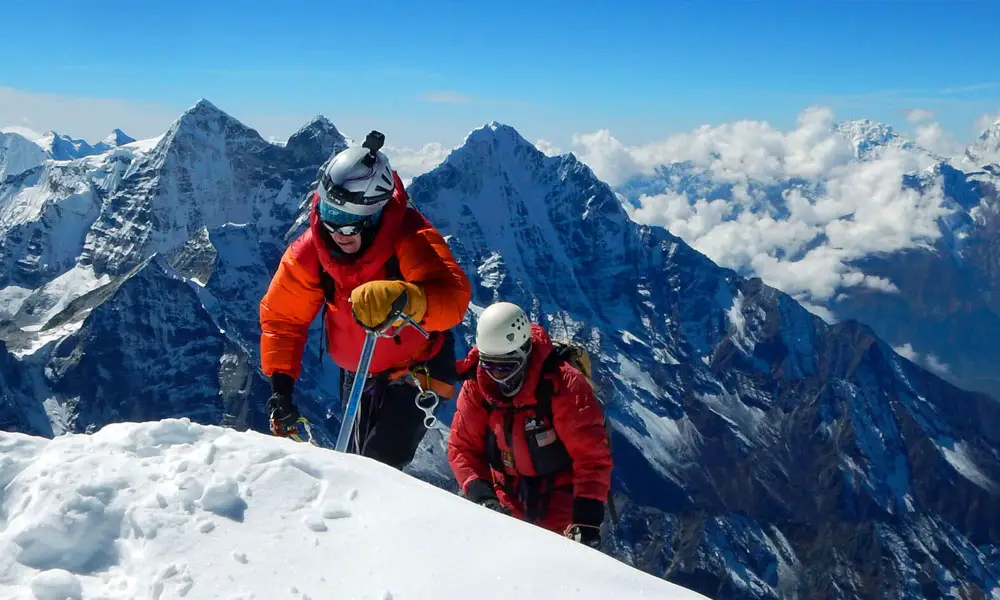
Climbing mountains has never been easy; the treacherous slopes, harsh climate, and consistent risks of frostbite and altitude sickness (that can even be fatal) have always made mountaineering one of the toughest outdoors. On top of that, trying to scale the highest snowy peak in the world, Mt. Everest, at an elevation of 8,849 meters, is a once-in-a-lifetime adventure that’s on its own level.
If you are planning Mt. Everest climb without proper knowledge, experience, and essential technical skillsets is the same as drawing all your efforts, money, and time.
Ascending the tallest mountain in the world comes along with formidable challenges and risks that no mountaineering enthusiast can escape. Even professional climbers who have successfully submitted other 8,000-ers and even Mt. Everest multiple times have to follow proper preparation protocols.
The technically rugged slopes of the mountain demand the climber to have technical skills like using ropes, carabiners, harnesses, anchors, crampons, and ice axes.
Mt. Everest expedition takes around 6 to 10 weeks to complete, so definitely the preparation for this 2-3 months long adventure should be done accordingly to stay driven for the conquest of the glorious peak that crosses heaven.
1. How to Train to Climb Mount Everest?- Analyze Your Physical Capabilities
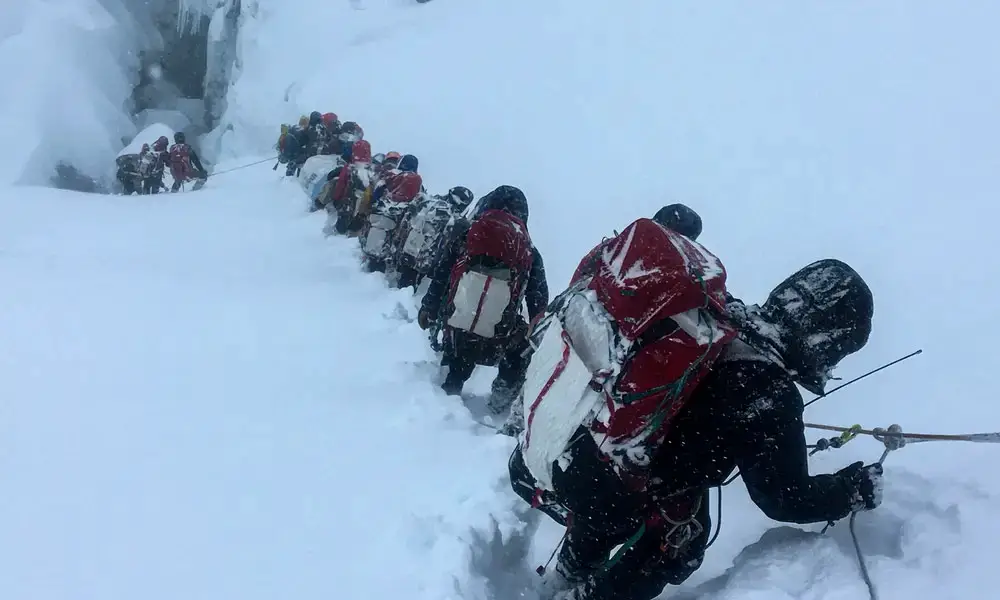
The conquest of the tallest snow-capped wonder is a dream of every mountaineering enthusiast. Even the trekkers who got to taste the magnificence of this alluring peak from up close have decided to live their lives on the slopes; Nimrla Purja (Nimsdai) is one such mountaineering legend whose hidden passion was stirred under the shadows of this glorious peak.
But, still, the summit of the mountain at an altitude of 8,849 meters, a.k.a Third-Pole, isn’t everybody’s cup of tea. Especially if you are not experienced in high-altitude adventures that require multiple days of acclimatization, this conquest can be a tough challenge for you.
Everyone has different physical capabilities; people born at higher altitudes may have it slightly easier to deal with the lower oxygen saturation level, but it can’t be the same for someone who grew up at sea level. Similarly, people who are physically fit and active have the upper hand during the strenuous adventures meanwhile, people who are not fit or haven’t trained enough struggle to make it to the end.
So, at the end of the day, it all boils down to you, what you are capable of, and what you can do. Because setting out on the conquest to the tallest mountain in the world without even understanding if you are capable of based on just an adrenaline rush for the glory is the same as forfeiting your life.
Mount Everest isn’t an easy expedition; it certainly isn’t risk-free either; more than 325 mountaineers have lost their lives on the slopes of Mt. Everest while trying to live their dream of conquest. We are not trying to scare you off or anything; just portraying the importance of knowing your strengths and weaknesses.
2. Testing Your Abilities; Practise Grounds
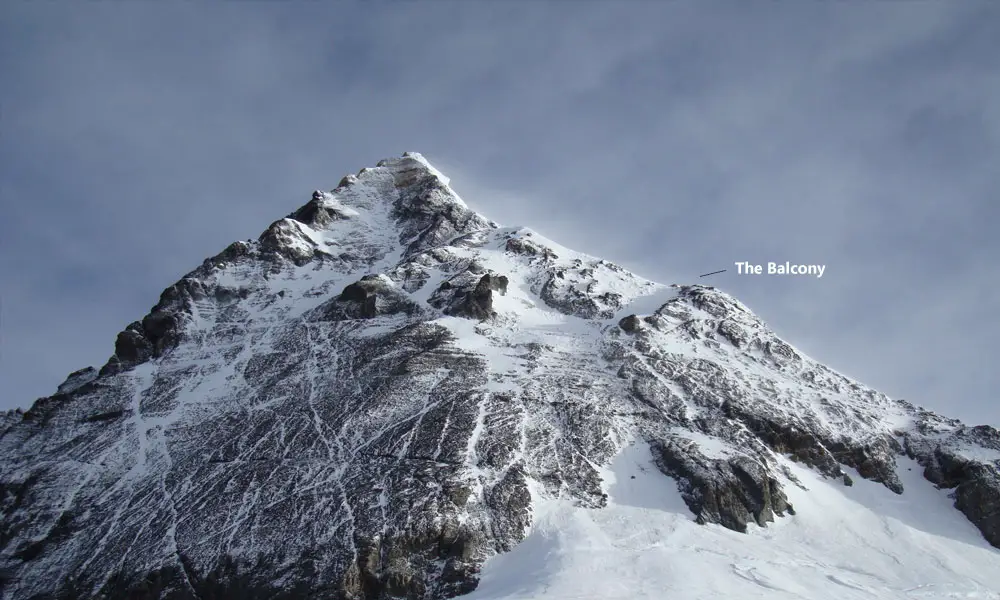
As a great man once said, ‘Once you know your weakness, you can be stronger as well as kinder.’ Understand your strengths-weakness and strive to be on top of your capabilities for the expedition. The best way to do this is to consult a professional fitness instructor who can even give you tips on the strength and endurance training that you will require for the adventure. Also, tips from mountaineering veterans and guides will be invaluable to put your adventure on a more convenient and safer side.
After you feel like you are ready for the expedition, don’t push right away for the mountain; many mountaineering experts recommend you summit the smaller peaks as the preliminary ground for the adventure on Everest. If you are completely new to high-altitude adventures, you need to start from ground zero; sign up for the trekking adventures on the Himalayas (high-altitude treks will be best to check your endurance level).
Check how your body reacts to the higher altitudes, if you have any symptoms of altitude sickness, and how easy it was for you to acclimatize. After making a note of things during the adventure and working on improvable factors, then move on to the second step, this time trying ascending smaller peaks to get used to the alpine environment.
Mont Blanc (4,807 meters), Mt. Kilimanjaro (5,895 meters), Lobuche Peak (6,119 meters), and Island Peak (6,165 meters) are some of the ideal choices to practice and evaluate your mountaineering skills and spirit.
3. Aspirations for the Ultimate Fitness Level
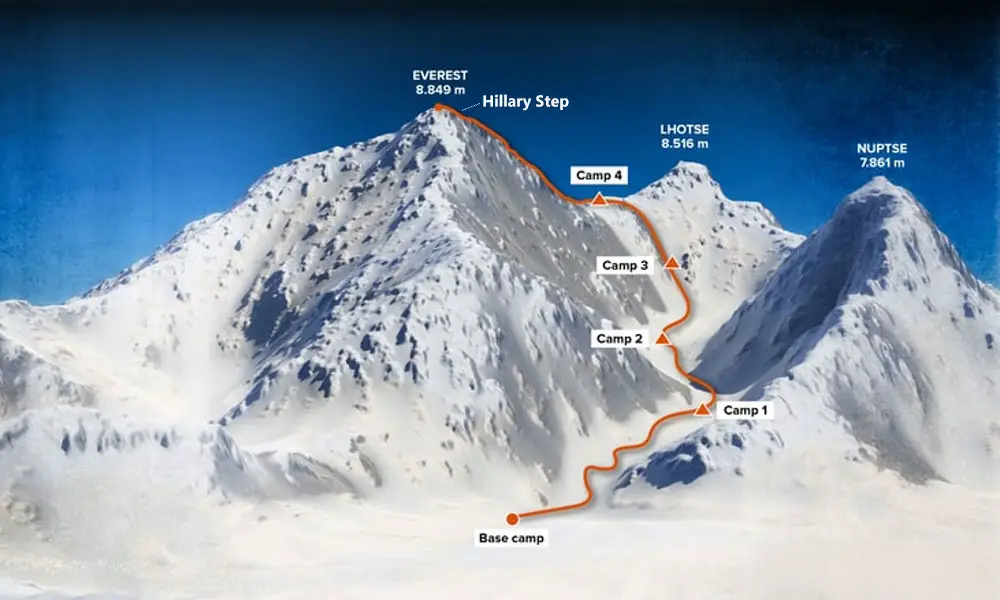
You might have heard about the basic level of fitness requirement for the Everest Base Camp (5,364 meters) trek, the highest trekking adventure in the world. Although many trekking enthusiasts have successfully completed this at the foothills of the tallest natural snowy infrastructure regardless of their fitness level and age.
The expedition to the top of the world is entirely a different story.
The death on Everest exceeded the recorded 325 counts besides avalanches are mostly due to exhaustion and Acute Mountain Sickness (AMS). As both altitude sickness and exhaustion are related to physical fitness factors, it is recommended for mountaineers to be on their top during the Mt. Everest expedition.
As the legend says, ‘the fitter, the better,’ your high-altitude adventure will be a lot more convenient if you are in good shape. If you are fit, then your muscles will require less oxygen to move around, and also they will produce less carbon dioxide, significantly reducing the amount of air you need to breathe.
So, sticking with the regular exercise routine before the expedition will not only improve health conditions but also drastically improve your acclimatization abilities which are very crucial at higher altitudes.
It is recommended that you should start training for Mt. Everest climbing at least 6 to 8 months before the actual expedition; if you are a completely newbie, you could stretch it up to 12 months prior to the adventure. This physical preparation part will include training regimes, practice hikes, and the summit of the smaller peaks to get used to the alpine environment.
Training Regime- How to Train to Climb Mount Everest?
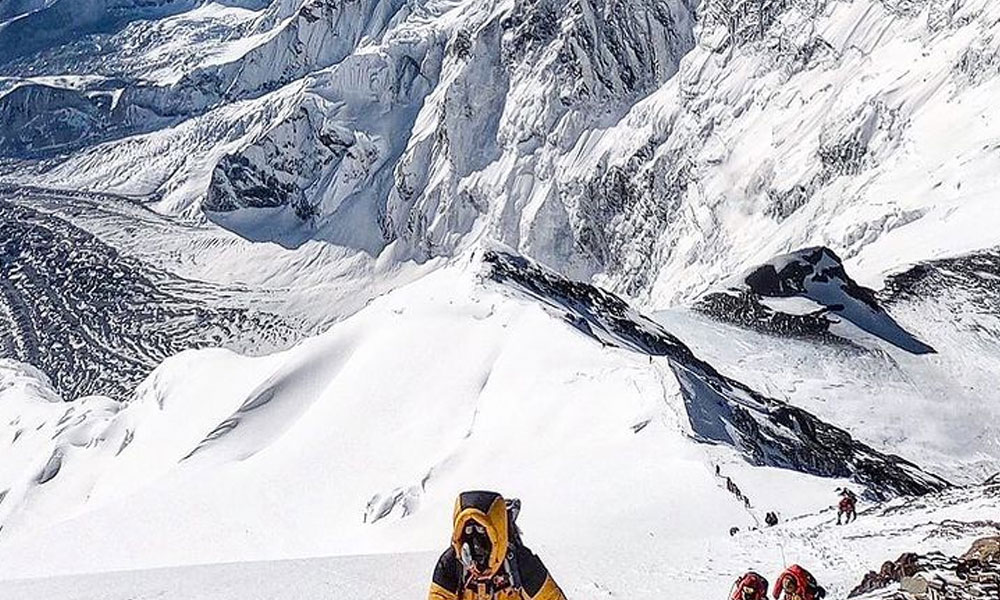
You could include the following exercises in your training regime to prepare for the summit of Mt. Everest.
Strength Training
- Squat and lunges
- Push-ups
- Bench press
- Overhead press
- Pull-up
- Deadlift
- Bicep curl
- Cable curl
- Preacher curl
- Plank
- Weightlifting
(Note: During both trekking and climbing, you will require significant leg and arm muscle strength; in fact, your climbing part will totally rely on these factors. So, emphasize these factors during your training regime)
Cardiovascular Training
- Jogging
- Cycling
- Aerobic
- Swimming
- Climbing
- Dancing
- Rowing
- Stair climbing
- Cardio
As cardiovascular training improves the body’s capabilities to deliver oxygen-rich blood to muscles, it improves oxygen uptake both in the lungs and heart so the person is able to sustain the physical activity for a longer period)
Mental Preparation
Although physical preparation is a crucial part of the success of any mountain expedition, the mental preparation factors shouldn’t be overlooked either. As you will switch up to a different environment, climate, and a complete lifestyle changeover for 2-3 months, you will also need to prepare for your Mount Everest Climbing mentally.
- Practice controlled breathing and meditation
- Get over your fears
- Practice mental toughness
- Encourage yourself
- Learn to push beyond your comfort zone
- Focus on present
- Boost your confidence level
- Use visualization method for movements
- Stay positive, surround yourself with positive people
Advantages for the Fit Mountaineers During Mt. Everest Climbing
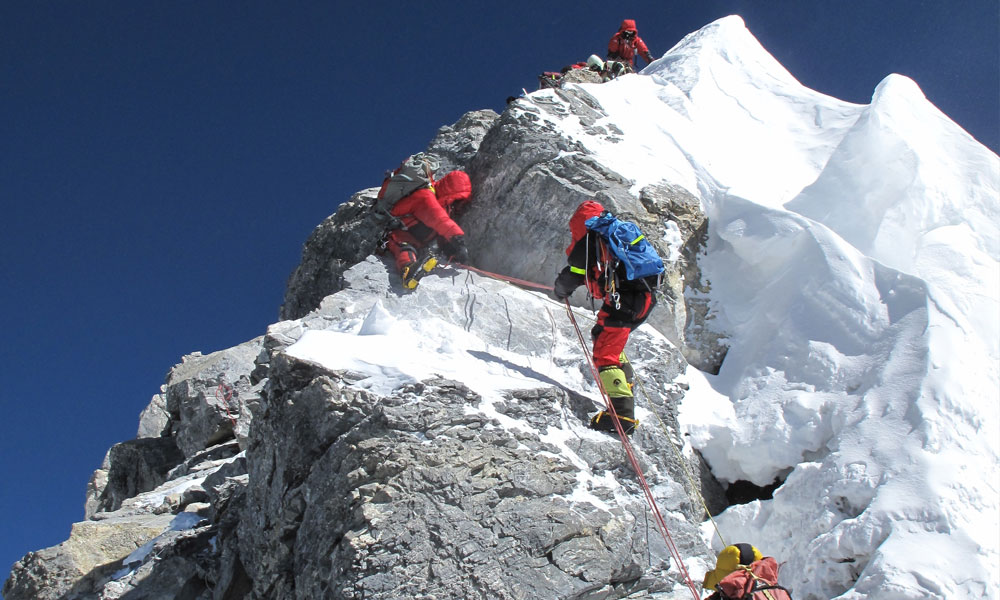
- You will need less amount of oxygen during your expedition
- If you are in top shape and exercise daily, it will also help you a lot with the acclimatization process
- It will also boost your confidence in climbing, significantly boosting your mental fortitude
- The fitter you are, the better your muscle and bone strength which is very crucial for high-altitude adventures like this
- You will be able to outpace the slow climber and won’t be stuck in traffic to make the summit
- You are less like to suffer from exhaustion and altitude sickness if you are fit
- Chances for frostbite become significantly less
- You won’t put the life of any expedition member and Sherpa guide at risk with your incompetency
- You will be robust to cope with the harsh environment on the slopes and bad weather conditions
- In overall, being mobile and physically fit will make the experience more immersive and enjoyable
You may also like:
- Who is Everest Sleeping Beauty?
- The Famous Green Boots on Mount Everest
- How Hard Is It To Climb Mount Everest?
4. Acquire Mountaineering Skills
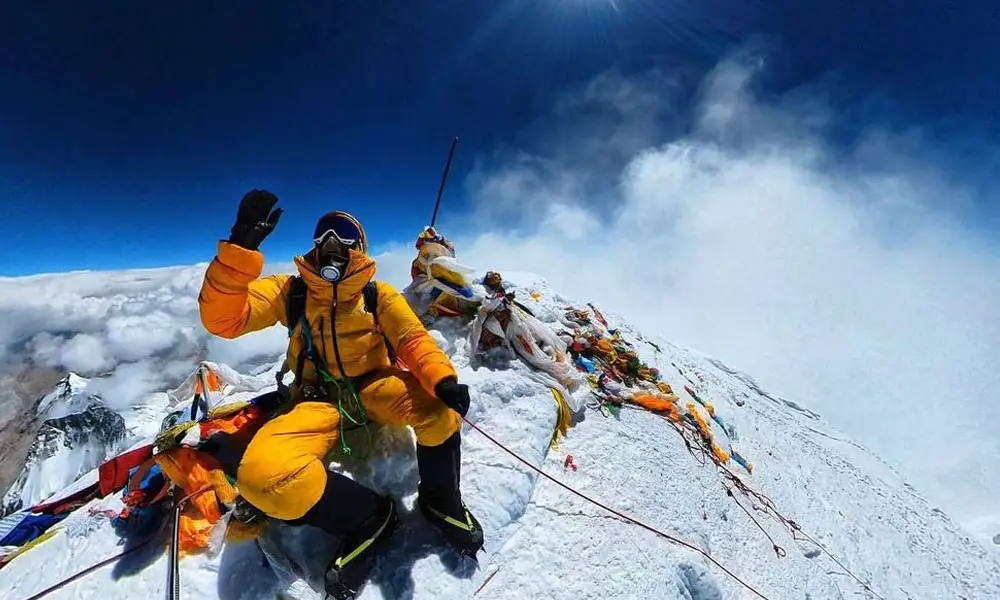
To bluntly put it, it is not possible to climb Mt. Everest without an advanced level of mountaineering skills. Unlike trekking, you will be consistently using crampons for firm footing on the slopes and during both ascend and descend. So, you will be required to master the skills of being comfortable using them and even crossing the ladder wearing crampons.
Most parts of Mt. Everest climbing include jumar techniques, a clamp with a handle to help climbers during their ascends and descends, so you will need to properly use them, especially while wearing thick gloves like in your actual expedition on the mountains.
You will also need to be proficient in skillsets like using an ice axe, ropes, harness, carabineers, anchors, rappelling, belaying, etc., to cover the technical segments on this magnificent peak. To acquire these skills both theoretically and practically, you can enroll with institutes that offer mountaineering courses; on average, these courses last about 30 to 40 days.
Classifying Mt. Everest Expedition
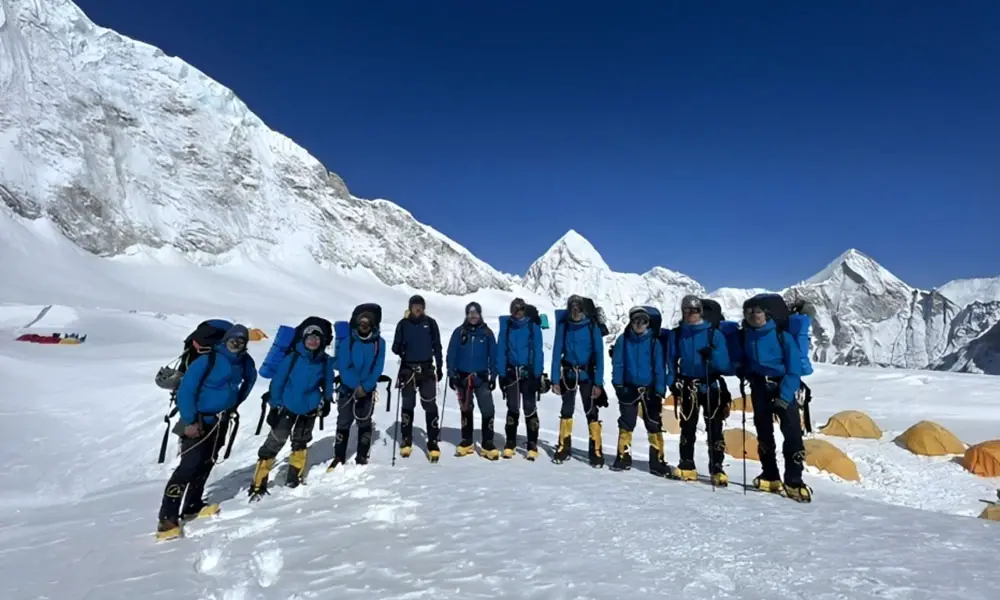
The Everest expedition has been classified into five classes that determine the skillset required and difficulty level:
Class 1
The Class 1 segment of the Everest climbing includes hiking trails that pass through diverse landscapes from the deep valley, moving across the lush green hills and finally reaching the wide vistas of the Himalayan onto the glacial terrains.
Although the adventure trekking trail can be moderately difficult due to the steep segments and rough landscapes, you will still not require any technical skills to complete the Class 1 trail.
Class 2
Similar to the Class 1 segment, it is a simple off-trail hiking route. You still won’t need any technical climbing skills for this segment, but you have to occasionally scramble on the route and use your hand for balance.
This segment is identified with the steep, narrow parts of the route that need careful ascending and straightforward descends, i.e., Kala Patthar at the elevation of 5,545 meters.
Class 3
Class 3 section of the Everest expedition is considered the ‘actual climbing’ part as you will be constantly using your hand to scramble and balance. In these segments, you also use fixed ropes on the slopes to down climb facing out from the route using handholds.
Class 4
This class of the expedition consists of simple climbing with exposure; you will use your upper body muscles to ascend on the slopes following the set ropes, which is also known as ‘rappelling.’ In these segments, you have to be extremely careful with your scaling, as the falls could be fatal.
You will also use climbing ladders in the Class 4 section, and you will need to be careful with your footing. Hillary Step, at an elevation of 8,790 meters, and Khumbu Icefall, at an altitude of 5,486 meters, are considered the sections that fall under the Class 4 segment.
Class 5
Class 5 sections are the true technical climbing sections on the slope of the mountain that require proficient mountaineering and technical skills. You will need to skilfully use the mountaineering equipment like ropes, ice axes, harnesses, anchors, and carabineers during ascends and descend on these segments.
The climbing difficulty in the Class 5 segments has been classified based on the difficulty of the sections from 5.0 to 5.13. The 5.0 sections of the slopes represent the easy climbs with frequent foot and hand holdings, whereas the 5.13 segments are notorious for the smooth surfaces and vertical rocks on overhangs.
But rest assured, neither of the South Col and Northeast Ridge routes have sections this strenuous, it’s just an overall term to identify other much more difficult routes on Everest that exceeds the difficulty level of these two popular routes for the summit.
5. Do a Throughout Research
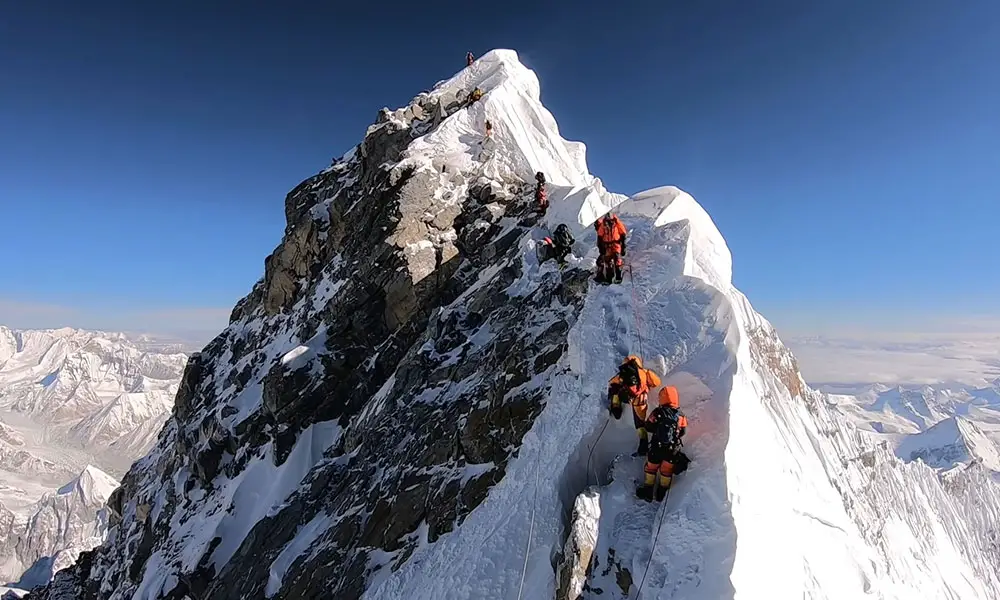
It is very important to understand the type of expedition you are headed, i.e., what you can expect, what equipment to carry, what you should be on the lookout for, and tips regarding the adventure. For this, you can consult with the company managing your expedition, an experienced mountaineer, or just simply follow mountaineering groups on social platforms for their insightful tips and opinions
For instance, do proper research on the gear you will need for your expeditions and about their functions, including some other additional equipment that will be beneficial in an alpine environment.
How to Train to Climb Mount Everest?- Essential Climbing Gears
- Climbing boots
- Crampons
- Descenders and ascenders
- Harness
- Climbing rope
- Screw gate
- Ice screw
- Snow bar
- UIAA tested helmet
- Carabiners
- Anchors
Furthermore, doing additional research on the preparation for a mountain expedition, precautionary measures, and the use of First-aid kits can be invaluable during your adventure.
Here are some additional tips for your mountain expeditions that might be helpful:
- Start your training regime even prior to the recommended period if possible
- Always read about the mountain you are about to climb, like weather conditions, the best time to visit, personal experiences, and journals
- Packs snacks high in protein and carbs
- Stretch and do warm-up sets before climbing
- Always carry First-aid kits, taking respondent First-aid classes for health emergencies never goes to waste
- Don’t ever underestimate the forces of nature
- Take short breaks, do enjoy the view but don’t lose track of time
- Maintain the determination and fortitude of mind
- Bring weather forecast equipment to keep tabs on the climatic conditions
- Always carry First-aid kits, taking respondent First-aid classes for health emergencies never goes to waste
